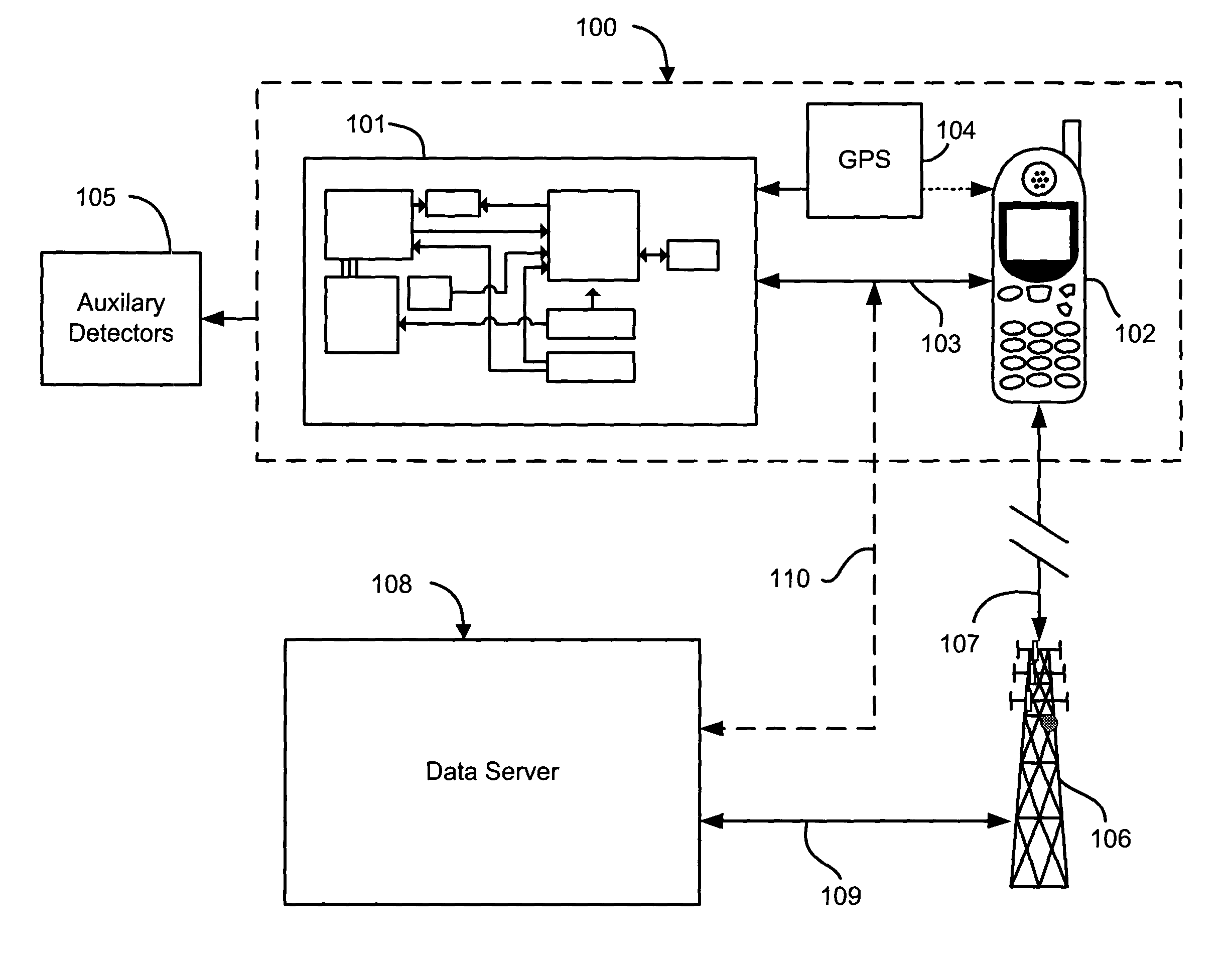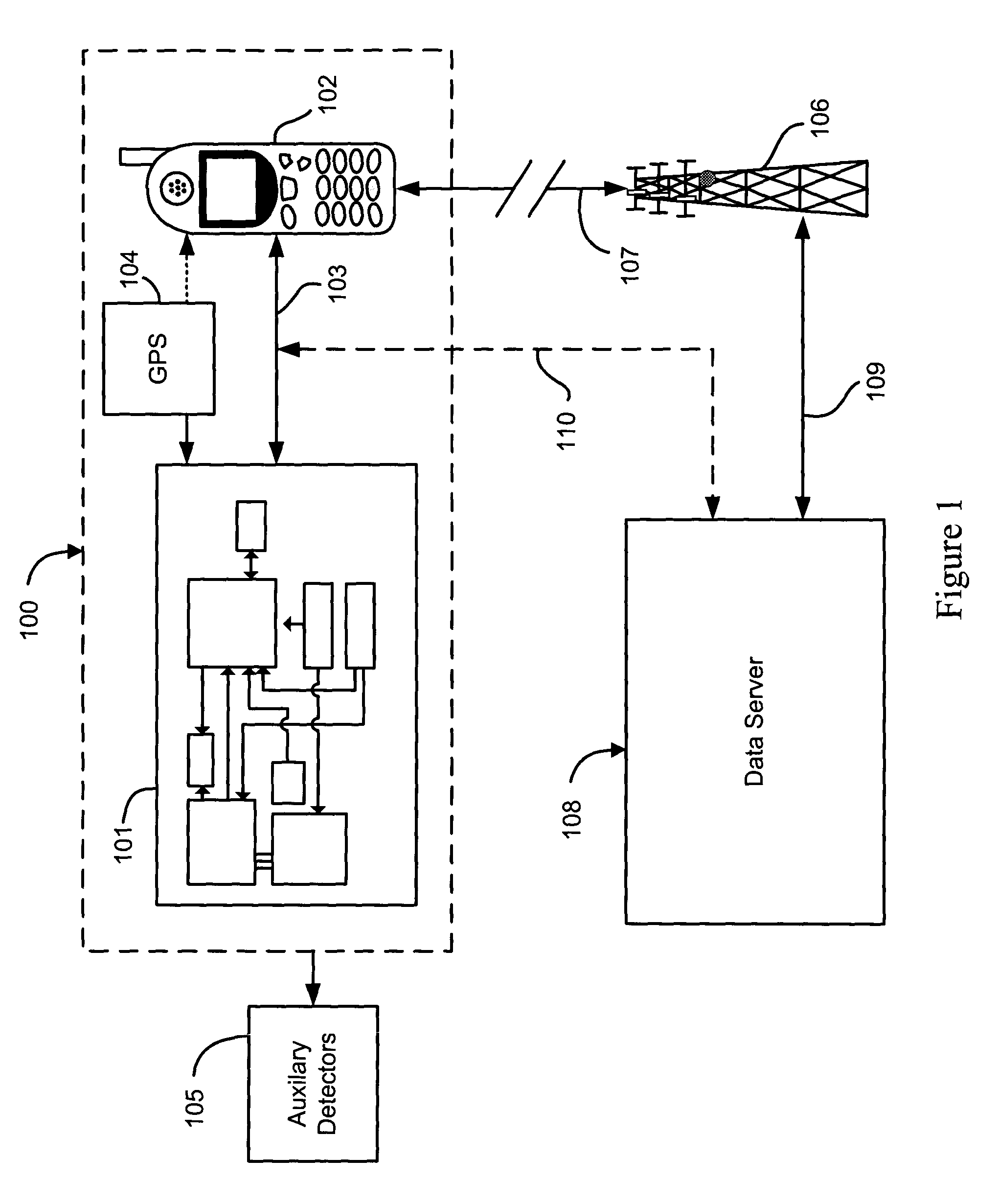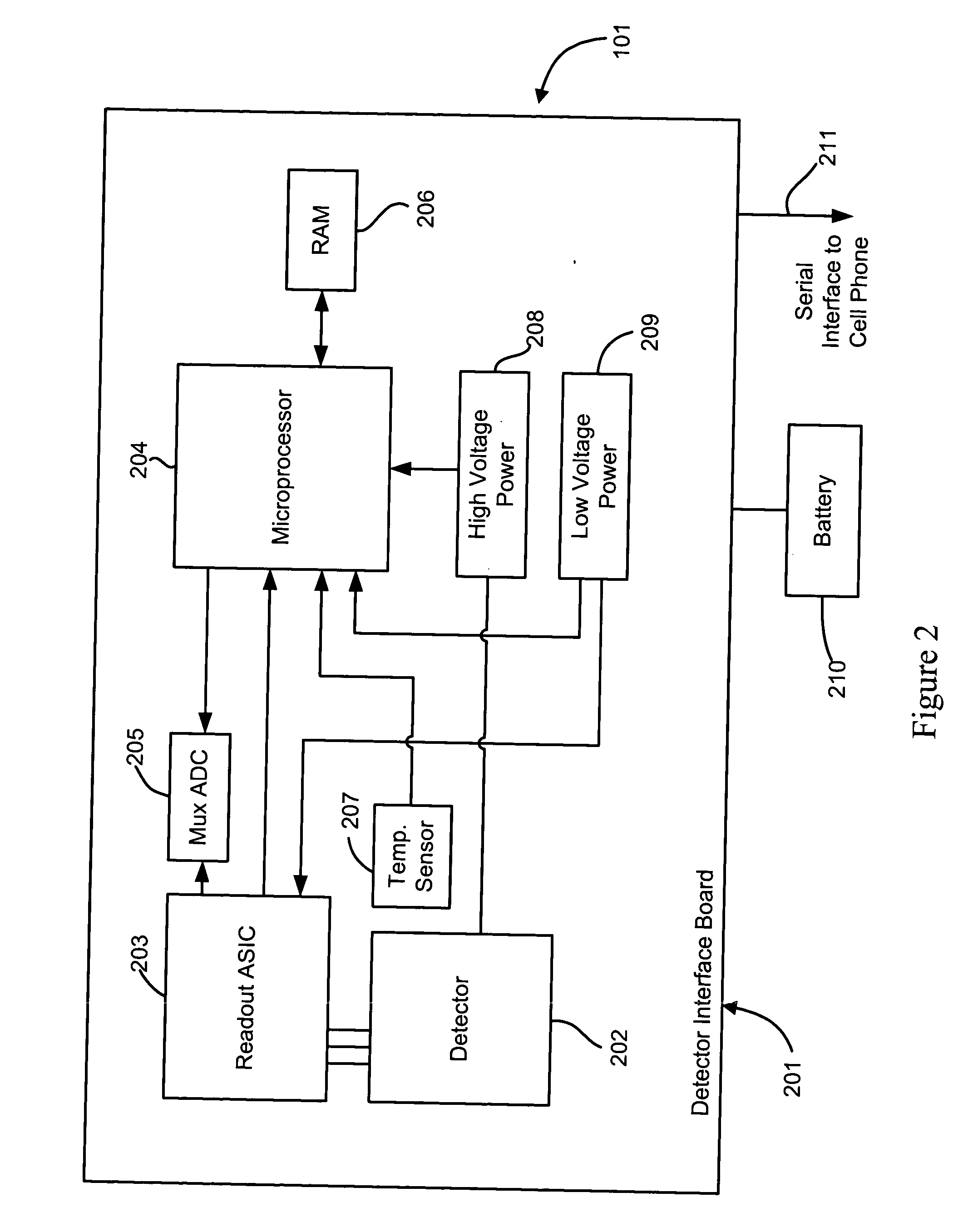Cellular telephone-based radiation sensor and wide-area detection network
a radiation sensor and cellular telephone technology, applied in the field of detection instruments and networks, can solve the problems of large batteries for cryogenically cooled detectors, inability to provide high spectral resolution, and difficult use of scintillation and cryogenically cooled detectors
- Summary
- Abstract
- Description
- Claims
- Application Information
AI Technical Summary
Problems solved by technology
Method used
Image
Examples
Embodiment Construction
[0014] The present invention is generally directed to a portable (e.g. handheld), low-power, low-cost, high-performance detection instrument having a small application-specific sensor integrated with a cellular telephone, personal digital assistant ("PDA"), or other portable personal electronic device. Such portable personal electronic devices are preferably of a type having both a locator functionality for electronically determining the location of the instrument, e.g. using a global positioning system ("GPS") receiver, and a wireless communications functionality enabling mobile data transfer, e.g. using a wireless modem to enable mobile Internet access. Portable personal electronic devices having at least the wireless communications functionalities are generally referenced herein as mobile communications devices ("MCD"). It is appreciated that the locator and wireless communications functionalities may be provided by built-in components of the MCD, or in the alternative, by separa...
PUM
 Login to View More
Login to View More Abstract
Description
Claims
Application Information
 Login to View More
Login to View More - R&D
- Intellectual Property
- Life Sciences
- Materials
- Tech Scout
- Unparalleled Data Quality
- Higher Quality Content
- 60% Fewer Hallucinations
Browse by: Latest US Patents, China's latest patents, Technical Efficacy Thesaurus, Application Domain, Technology Topic, Popular Technical Reports.
© 2025 PatSnap. All rights reserved.Legal|Privacy policy|Modern Slavery Act Transparency Statement|Sitemap|About US| Contact US: help@patsnap.com



